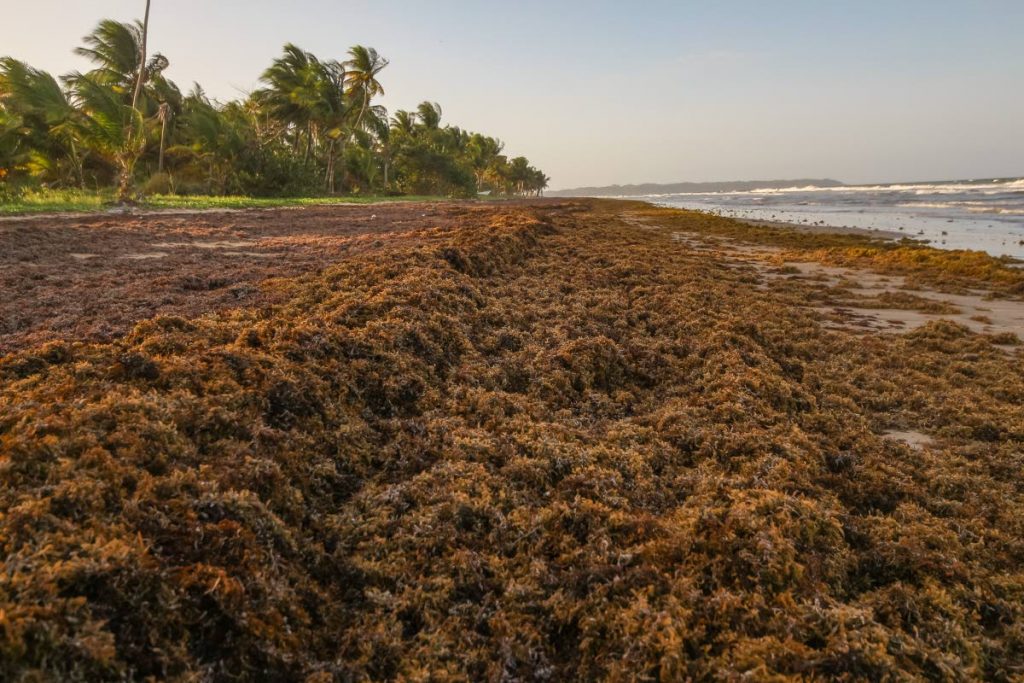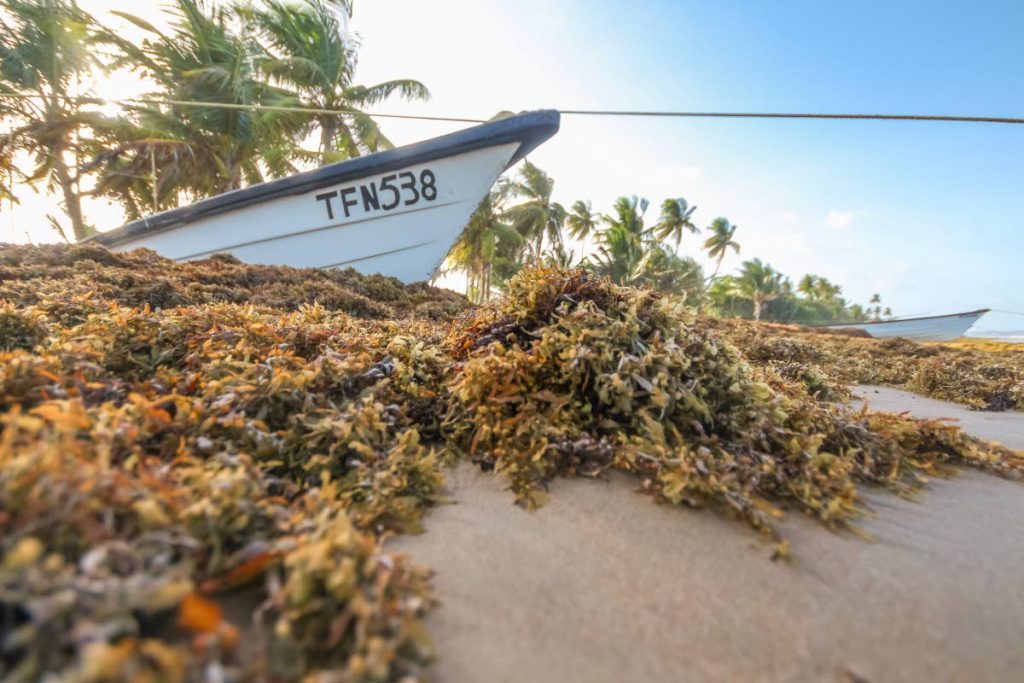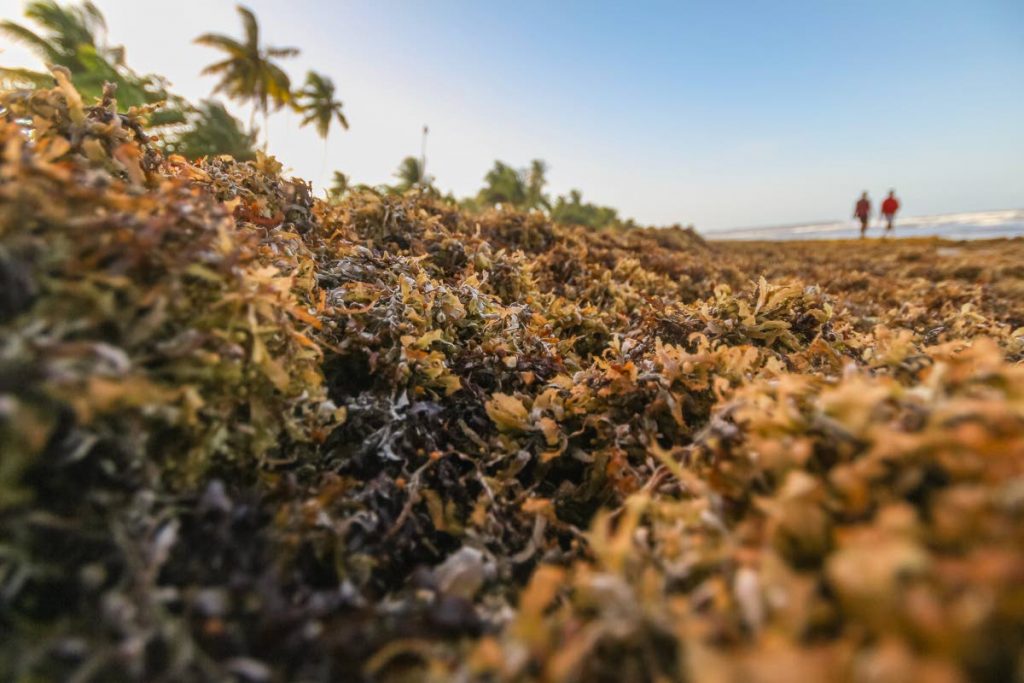The return of sargassum

When sargassum started floating toward land, anchoring itself on Caribbean shorelines in 2015, it made international headlines, deterring tourists from venturing to island getaways and frustrating locals away from beaches.
Three years later, the volume of the seaweed on the TT coastline has decreased, but the trouble it is causing the fishing and tourism community in Mayaro persists.
When Business Day visited Mayaro beaches last week, the nine-mile coastline was covered in the seaweed, which piled up to three feet high on beaches used by the public.
The sargassum smells bad and according to Mayaro/Rio Claro MP Rushton Paray, what many see as a mild inconvenience is a real menace, affecting the livelihood of fishermen and the tourism businesses in the area.

Mayaro's economy doesn't depend on fishing and tourism. The area has an economic advantage over other communities that do not have the backing of the energy sector. The money from oil trickles into the community through service industries and the employment of non-skilled, skilled and semi-skilled labourers.
Still, fishing provides a livelihood for many residents.
Paray said he was concerned about the seaweed's impact on the local economy.
"People still come. They came for Easter, but what happened though is that people cancelled their bookings because when they came the sargassum had rampaged the shorelines. A lot of people came for one day and they went back home."
Paray is looking for solutions to the problem and is discussing creating safe bathing zones with lifeguards so resources can be targeted at specific areas.
For the bigger hotels, which have swimming pools, the sargassum does not present a major problem. Visitors who cannot use the beach are disappointed but make use of the pools.
It is the people who provide single-unit vacation rentals that are affected most.
"People are not happy," said one home-owner. "They complain about it and they sometimes cancel, because why would they want to go spend a weekend on the beach if they cannot use the beach?"
But tourism isn't the only thing affected. The matting of the sargassum is so high that when fishing boats have to launch they cannot get out.
Rupert Nagir, a fisherman for the past 40 years, called the seaweed a hazard.
"I can’t fish. I do drift net fishing and so my net floats on the water's surface at night. But it is too dangerous now. When we pull the net it is heavy with that grass, and it can sink the net or even damage the boat engine in the water."
Nagir, 61, said his fishing has been curtailed and it is affecting his ability to earn a living.
"I have my net to go out and I have a loan paying for my net and I cannot go out because of the grass. Within the grass we get fish, but it is a chance people are taking. Right now I have no fish so I cleaning crab to cook."

Local government councillor for the Mayaro/Guayaguayare district Kyron James said the regional corporation was still looking at ways to tackle the sargassum problem.
"No matter how much we remove, more comes the following day. For the Easter we tried to clear the more popular beaches. As a council we decided to take internal resources and clean. Once we cleaned the beach, the next day the sargassum was back," James said.
There was yet no schedule to clean the beaches and James acknowledged that the problem needed to be looked at from multiple angles, as it is arguable that the sargassum actually helps with erosion.
The coastline in Mayaro is badly affected by coastal erosion.
"A lot of people believe that sargassum itself helps with erosion, and there is a lot of erosion happening on the east coast and it could be nature’s way to battle the erosion. There is no direct harm to beach-goers and it is very inconvenient and smells horrible. The fishermen have a problem though. I see that their boats have to be jacked up because of how thickly it spreads on the shore."
Sargassum is also an expense for governments. In 2015, when the seaweed engulfed beaches, the Tobago House of Assembly (THA) labelled the event a natural disaster and spent more than $3 million in clean-up efforts.
What is Sargassum? How do we make it go away?
Business Day contacted the Institute of Marine Affairs (IMA) for answers on dealing with the sargassum challenge. IMA deputy director Rahanna A Juman described sargassum as a genus of brown macroalgae (Class Phaeophyceae) that has both attached and free-floating forms. She said generally, sargassum was an important part of coastal ecosystems, where it helps anchor sand and contributes nutrients and acts as a mobile transport habitat for a variety of marine life.
It also acts as a refuge for young fish and invertebrates. "Once it comes ashore in overwhelming amounts, however, it fast becomes a smelly nuisance," Juman said in an email.
She said what was worrisome was findings of recent research in which the 2014/2015 inundation event was described as exceptional, particularly in the western tropical Atlantic.
The study showed that while the amount of seaweed is problematic, the ecological impacts of this rare form of sargassum are also new to science.
"The deposit and prolonged presence of this seaweed have also impacted east coast communities in Trinidad, from Cumana to Guayaguayare. A number of factors have been postulated as contributing to this sargassum influx, including warmer sea surface temperatures due to global warming, changes in oceanic circulation and increased nutrient input from large continental rivers and from equatorial upwellings.
"These factors are outside of the direct control of the Government and there is very little that can be done to prevent and/or minimise this natural phenomena from impacting Trinidad and Tobago," Juman said.
The IMA has already started addressing the issue, working with the Global Environmental Facility Small Grant Programme (GEF/SGP) to hold multi-stakeholder meetings in October 2015.
"These consultations resulted in the development of a national sargassum response plan that outlines a suite of potential management actions and synchronised approach to addressing the massive sargassum incursion. The objectives and components of the draft response plan include the development and implementation of an early warning system, communication strategy as well as coordinated clean-up efforts and emergency response teams, research and monitoring."
She said certain actions have already been implemented consistent with the draft response plan, such as the establishment of a local sargassum network. Information, including satellite imagery, is shared on the regional sargassum network.
Research is also being conducted by the University of Trinidad and Tobago and University of the West Indies to determine commercial uses of the seaweed such as conversion into manure, fertilisers, fungicides and fish food. The THA through the Tobago Emergency Management Authority and Department of Environment have developed their response plan, and have identified sites for storage/disposal in the east, central and southwest Tobago with appropriate designated perimeters to minimise impact on terrestrial plant life and to minimise the impacts of odours.

Comments
"The return of sargassum"